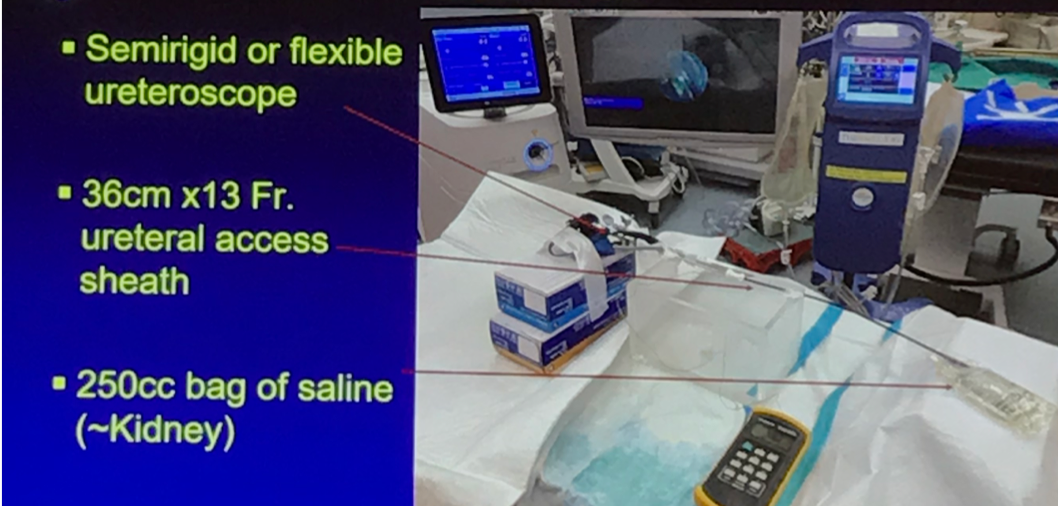In this in vitro study, the authors measured the heat produced by the firing of a 365-micron holmium laser at several laser settings that are routinely used in clinical practice. Temperature measurements were recorded during the use of a semirigid and a flexible ureteroscope at irrigation pressures of 200, 100, and 0 mmHg (Figure 1).
When using a semirigid ureteroscope at an irrigation pressure of 200 mmHg, the temperature remained below 43°C with all laser settings; however, the temperature rose above this threshold when a flexible ureteroscopy was used at laser settings of 1J/10Hz, 0.2J/80Hz, and 1J/20Hz (Figure 2a). At 100 mmHg, the temperature rose above the 43°C threshold during the use of the flexible ureteroscope with all laser settings except for 0.6J/6Hz (Figure 2b). At multiple laser settings, the threshold was reached within one second of firing the laser. At 0 mmHg of irrigation pressure, all laser settings resulted in temperatures greater than 43°C with both the semirigid and the flexible ureteroscope (Figure 2c).
These findings indicate that laser settings that are used routinely in practice can rapidly (i.e. as quickly as one second of laser firing) result in potentially harmful temperatures within the ureter. In the discussion following the presentation, the authors noted that this has implications for potential ureteral injury and subsequent stricture. Additionally, it is common in surgical practice to decrease or to cease irrigation flow at times in order to reduce stone retropulsion; however, in light of the findings of this study, this practice may result in thermal damage to the ureter, as even one second of diminished irrigation flow can result in dangerously high temperatures during use of the laser. The authors also plan to study the temperature/laser/irrigation relationship during use of pulsed flow (rather than continuous flow) irrigation.
Figure 1. Experimental setup

Figure 2. Temperature curves at laser settings of interest using both a semirigid and a flexible ureteroscope at irrigation pressures of 200 mmHg (a), 100 mmHg (b), and 0 mmHg (c). Red arrow indicates the threshold temperature of 43°C.
a. 200 mmHg irrigation pressure

b. 100 mmHg irrigation pressure

c. 0 mmHg irrigation pressure

Presented by: Russell Terry, MD, Department of Urology, Duke University School of Medicine, Durham, North Carolina
Written by: Frank Jefferson, (Department of Urology, University of California-Irvine) at the American Urological Association's 2019 Annual Meeting (AUA 2019), May 3 – 6, 2019 in Chicago, Illinois


